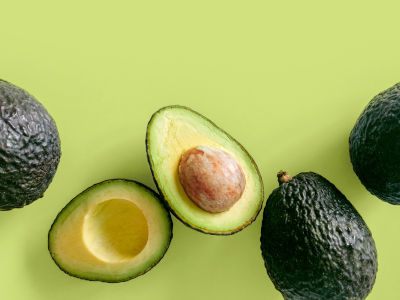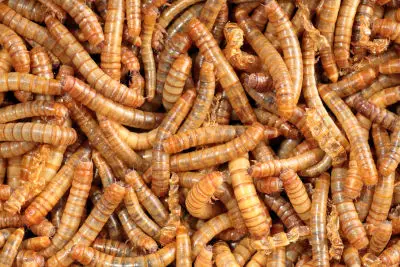Why is a Komodo Dragon Called a Dragon?
Komodo Dragons are often ridiculed for their name. Many people wonder where their name came from and if they are even really lizards. For this reason, I will explain where they actually got there name from.
Why is a Komodo dragon called a dragon? When they were first discovered, they were known to have “dragon-like” features and are from the island of Komodo. These lizards were discovered in the early 1900s. During the first world war, when a plane crashed and discovered them.
| Are these foods dangerous for your Beardie? | |
| Avacado? Click here to learn, from this guide, if this food is dangerous |  |
| Superworms? Click here to learn, from this guide, if this food is dangerous |  |
Now you know whey they are called this, lets now learn more about them, such as what other names they have, if people can actually have them as pets, if they are venomous, what other animals they prey on and more.
What is the Komodo Dragon?
The Komodo Dragon is also known as the Komodo monitor. Its scientific name is “Varanus komodoensis” and it is found on the Indonesian island called Komodo. It is also one of the largest lizard species in the world.
It often raises curiosity amongst people, due to its sheer size (up to 10ft long) and dangerous persona. They are large formidable lizards. They are also known part of the Monitor lizard family (Varanidae).
Why is the Komodo dragon classed as a reptile?
This is because the Komodo dragon fits into the category of reptiles perfectly. Firstly it has a backbone, scales, does not live in water, so it breathes through its lungs rather than using Gills. Finally, it is also cold-blooded. With all these attributes it is a perfect fit to be classed as a reptile, no matter the size.
Is the Komodo dragon an endangered species?
Yes, the Komodo dragon is an endangered species. The reason for this can be pinned down to a few key things:
- Volcanic activity
- Eating its own Young
- Environmental Effects (Habitat)
To summarise, in the Komodo dragons natural habitat there has been volcanic activity which has caused widespread damage to their environment. This has affected their numbers.
But one of the biggest problems that they have is us, humans. Firstly they are sometimes hunted by us and secondly, there are indirect effects such as us hunting food that they rely on for food. An example of this is deer and other livestock.
Another large contributing factor is their tendency to eat their own young. They are also known to attack smaller Komodo Dragons as well.
Are Komodo dragons a good idea to have as pets?
The short answer for this is no. But let me explain:
Their size
Komodo dragons can be up to 10 feet in length. This is a really big lizard. Meaning anyone that would consider taking care of them would need a very advanced level of skill as well as unlimited resources to accommodate their diet and living environment. Not to mention the fact that they would be a constant danger of being eaten.
Infectious bacteria in their teeth
Komodo dragons are known to have very bad dental hygiene, to say the least. In recent studies, it has been found that the Komodo dragons can have up to 50 different variations of bacteria and toxic offerings. In fact, a proportion of these are actually very dangerous to humans if they are passed on.
Difficulties to differentiate between Male & Female
The male and female Komodo dragon is very hard to tell apart. In fact, there is no obvious way to do this especially if you are an untrained individual.
Also to make matters worse mixing males together is very dangerous because you can almost guarantee they will fight.
Cannibalistic tendencies
One of the things that Komodo dragons tend to do it is to prey on smaller Komodo dragons in their vicinity. As I’ve stated earlier, they also have a tendency to eat their own young. They will not hesitate to attack each other. As a potential keeper, you could have serious problems keeping them away from each other.
They will eat just about anything
Out of over 3,000 lizard species, the Komodo dragon wins the prize for being the largest living lizard in the world! pic.twitter.com/6teBafl6eu
— San Diego Zoo (@sandiegozoo) August 16, 2016
Nothing is safe around a Komodo dragon, they will eat almost anything. And when I say almost anything, I mean it. This includes hair, teeth, and horns off of their prey.
Poor hearing
They have really poor hearing especially in comparison to us human beings. They cannot voices that are low or high pitch screeches. So, communicating with them could be a challenge.
Related questions:
Q: Are komodo dragons venomous?
A: Yes, they are. However many people do not believe they are. Due to a recent discovery by researcher Brian fry, it was discovered that they do actually have venom.
Previous to this it was believed that they would only cause damage by the bacteria and toxins in their saliva which is passed on when they bite their prey.
This still happens to be honest, but they also unleash venom into their victim which can cause a number of different effects on their body.
This includes reducing the victims’ blood pressure, sending the victim into a shocked state.
All of this makes it almost impossible for their prey to escape, even if they are lucky and manage to escape their vicious bites.
It is been found that the Komodo dragons venom is comparable to the impact of some of the world’s most venomous snakes.
They are however different in the way that they inject this venom. Snakes typically inject the venom using their fangs. But, Komodo dragons do things slightly differently.
They unleash a vicious bite into the victim and open a deadly wound. The venom is then seeped into the wound affecting their prey, effectively immobilizing them. This stops them getting away so that the Komodo dragon can finish their meal.
Q: Can komodo dragons attach Attack large prey?
A: Yes, Komodo dragons can go after quite large animals, including deer, wild boars or even bigger. They use a strategy known as “ambushing” to catch their prey. This is done by lying in wait, waiting for their prey to go past them, without them knowing they’re there. Then pouncing on them when they are unexpected!
Q: Do Komodo dragons have a big appetite?
Yes, not only do Komodo dragons eat large animals they also have the ability to eat a lot in one sitting.
To put this into perspective, it is been known that one Komodo dragon can eat up to 80% of its own body weight in one sitting.
However, although they eat a lot in one sitting they do not eat frequently. For example, after eating a really large meal, they may not again for a whole month.
Q: How do they eat hair, teeth, horns, etc?
They don’t actually digest and metabolize these parts of the body. They actually regurgitate them into pellets, known as “Gastric Pellets”. They are ejected from their body. It is a compacted pellet of hair, horns, teeth, etc.
Q: Why do Komodo dragons dig up graves?
They have a tendency to look out for carcasses rather than always hunting for Life prey. This makes life a lot easier for them. They have a good skill of being able to detect and smell carcasses up to 6 miles away from them.
Unfortunately for the residents of komodo, this presents a problem. Because they sometimes detect carcasses, such as human bodies, that have been recently buried. To stop this happening, locals have been known to stop using sand based graves and use clay instead. As well as putting large objects, such as rocks, on top to prevent them from digging it up.
Q: How do some of these lizards avoid being eaten by their own Kind?
A: In a bizarre method to save themselves from being cannibalized by their own peers, they sometimes cover themselves in feces to make themselves seem unattractive to their predator. In reality, if you were facing being eaten by them, wouldn’t you consider this?